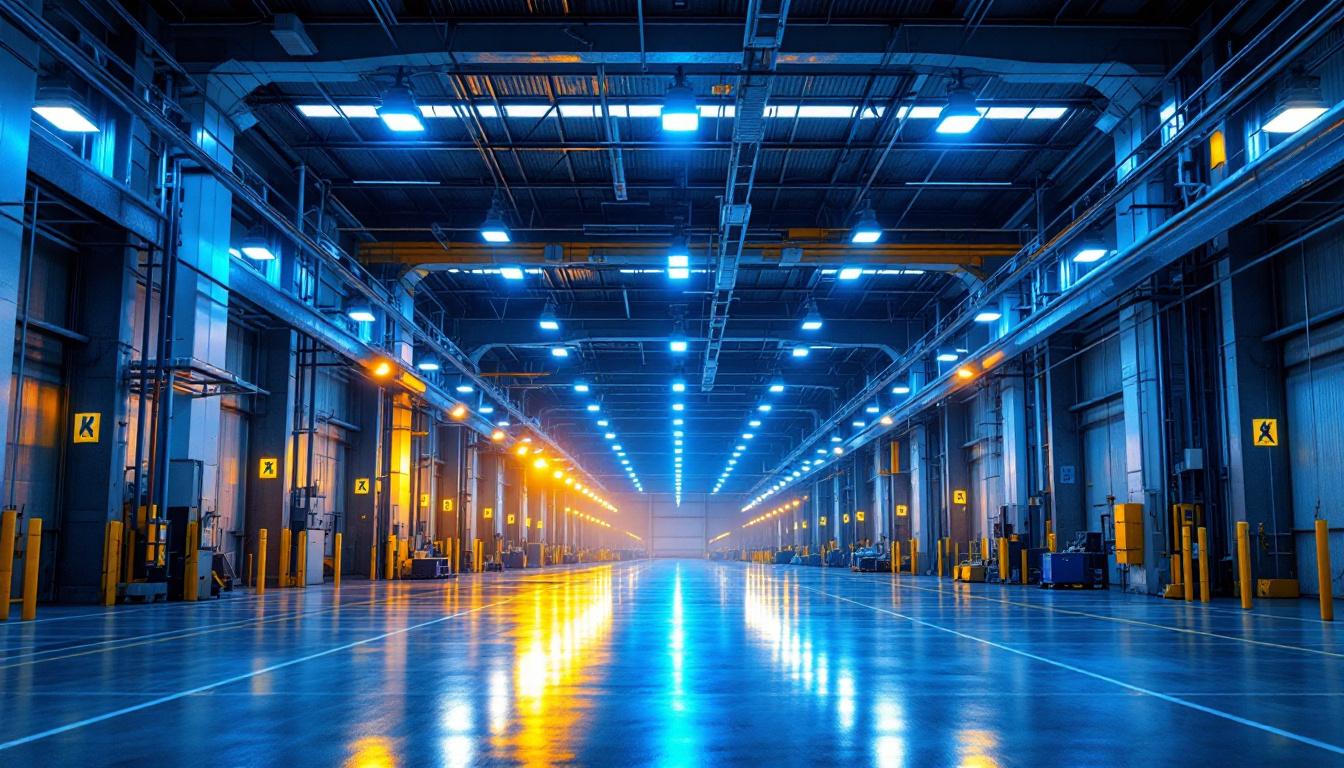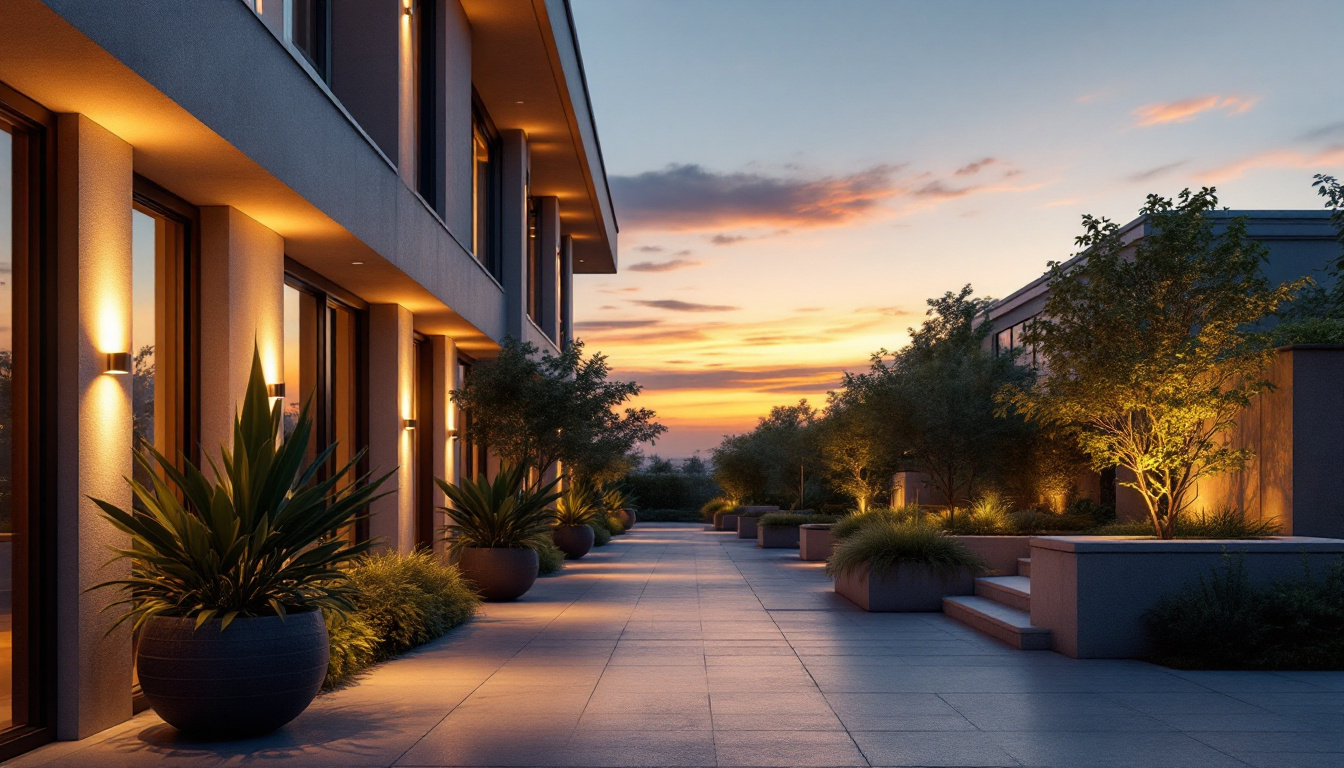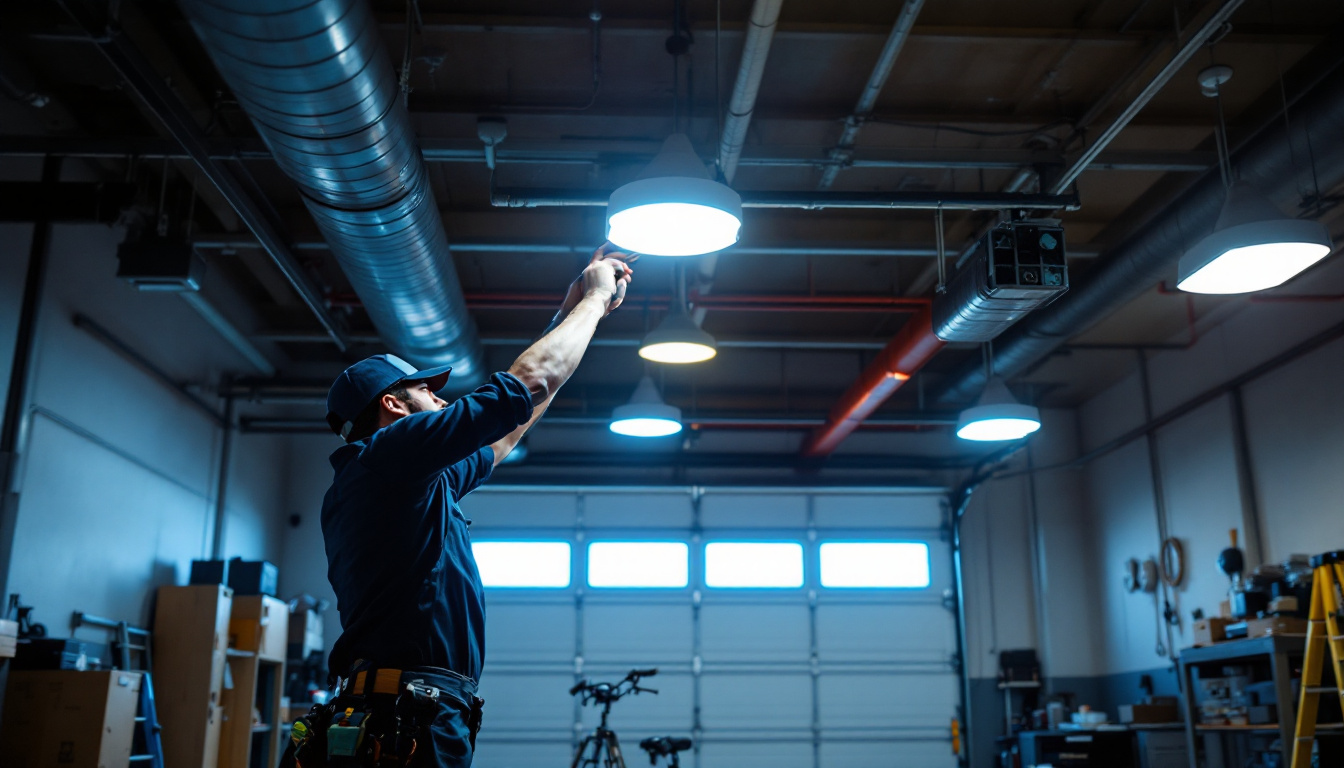
In the ever-evolving landscape of lighting technology, LED highbay lights stand out as a beacon of efficiency and versatility. As a lighting contractor, understanding how to implement these advanced lighting solutions effectively is crucial for future-proofing your projects. This article delves into the benefits of LED highbay lights, their applications, and the strategies to ensure that your lighting projects remain relevant and efficient for years to come.
LED highbay lights are designed for high ceilings, typically found in industrial or commercial settings. These lights provide bright illumination while consuming significantly less energy than traditional lighting options. The technology behind LED lighting has advanced rapidly, making it an ideal choice for various applications.
One of the primary advantages of LED highbay lights is their energy efficiency. Compared to conventional lighting solutions such as metal halide or fluorescent lights, LEDs consume a fraction of the power while delivering comparable or superior brightness. This reduction in energy use translates to lower utility bills, making them an attractive option for businesses aiming to cut costs.
Additionally, LED lights have a longer lifespan, often exceeding 50,000 hours of operation. This longevity reduces the frequency of replacements, minimizing maintenance costs and downtime. For contractors, this means fewer service calls and a more satisfied client base. Furthermore, the durability of LED lights means they are less prone to breakage compared to traditional bulbs, which can shatter easily. This resilience is particularly important in industrial environments where equipment and materials can be heavy and hazardous.
LED highbay lights are incredibly versatile and can be used in various settings. Warehouses, manufacturing facilities, gymnasiums, and retail spaces are just a few examples where they can enhance visibility and safety. Their ability to provide uniform lighting across large areas makes them ideal for spaces requiring high levels of illumination.
Moreover, the adaptability of LED highbay lights allows for customization. Options such as dimming capabilities, color temperature adjustments, and smart technology integration can cater to specific client needs, further enhancing the value of your lighting projects. For instance, in a gymnasium, the ability to adjust the brightness can create the perfect atmosphere for different activities, from high-energy sports to yoga sessions. Additionally, integrating motion sensors can optimize energy savings by ensuring lights are only on when the space is occupied, further reducing energy costs and extending the lifespan of the fixtures.
As industries continue to prioritize sustainability, LED highbay lights also contribute to reducing carbon footprints. By lowering energy consumption, businesses can significantly decrease their greenhouse gas emissions, aligning with global efforts to combat climate change. This eco-friendly aspect not only appeals to environmentally conscious consumers but can also enhance a company’s reputation, making them more attractive to potential clients and partners who value sustainability in their operations.
As technology continues to advance, lighting contractors must adopt strategies that ensure their projects remain relevant and efficient. Future-proofing involves selecting the right products, understanding emerging trends, and implementing flexible solutions that can adapt to changing needs.
When selecting LED highbay lights for a project, it is essential to choose products from reputable manufacturers known for quality and reliability. Look for lights that offer high lumen output, excellent color rendering, and energy efficiency ratings. Additionally, consider the warranty and support provided by the manufacturer, as this can be a significant factor in long-term satisfaction.
Opting for modular designs can also enhance future-proofing. Modular highbay lights allow for easy upgrades or replacements of individual components without needing to replace the entire fixture. This flexibility can save time and resources in the long run. Furthermore, integrating features such as dimming capabilities and adjustable color temperatures can provide additional versatility, allowing the lighting to be tailored to specific tasks or moods, which is particularly beneficial in environments like warehouses or retail spaces where lighting needs may vary throughout the day.
The lighting industry is continually evolving, with new technologies emerging regularly. Staying informed about trends such as smart lighting, IoT integration, and human-centric lighting can help contractors make informed decisions. Smart lighting systems, for example, allow for remote control and automation, enhancing energy savings and user experience. These systems can be programmed to adjust based on occupancy or natural light levels, further optimizing energy use and contributing to a more sustainable operation.
Additionally, consider the growing emphasis on sustainability. Eco-friendly practices, such as using recyclable materials and energy-efficient designs, are becoming increasingly important to clients. By incorporating these elements into your projects, you can appeal to environmentally conscious customers. Moreover, exploring renewable energy options, such as solar-powered lighting solutions, can not only enhance your project’s sustainability credentials but also reduce operational costs in the long run. As consumers become more aware of their environmental impact, demonstrating a commitment to green practices can set your business apart in a competitive market.
Effective design is crucial for maximizing the benefits of LED highbay lights. Proper placement, spacing, and control systems can significantly impact the performance and efficiency of the lighting system.
When installing LED highbay lights, understanding the layout of the space is essential. The height of the ceiling, the type of activities taking place, and the desired light levels all play a role in determining the optimal placement and spacing of fixtures. A well-planned layout can eliminate dark spots and ensure uniform illumination throughout the area.
For instance, in a warehouse setting, lights should be spaced to provide adequate coverage without excessive overlap. This strategic placement not only enhances visibility but also maximizes energy efficiency by reducing the number of fixtures required. Additionally, considering the beam angle of the LED highbay lights is vital; a narrow beam may be suitable for high ceilings, while a wider beam can help illuminate larger areas without requiring additional fixtures.
Furthermore, the type of activities being performed in the space can dictate specific lighting needs. For example, in manufacturing environments where precision is key, brighter and more focused lighting may be necessary to ensure safety and accuracy. In contrast, areas designated for storage may require less intense lighting, allowing for a more cost-effective approach while still meeting the minimum illumination standards.
Integrating control systems into your LED highbay lighting projects can further enhance their functionality. Dimming controls, occupancy sensors, and daylight harvesting systems can help optimize energy use and improve the overall user experience. These systems allow lights to adjust based on occupancy and natural light levels, ensuring that energy is not wasted when spaces are unoccupied.
Moreover, advanced control systems can provide valuable data analytics, helping clients understand their energy consumption patterns and identify opportunities for further savings. For instance, a facility manager can utilize this data to pinpoint times of peak usage and adjust lighting schedules accordingly, leading to significant reductions in energy costs over time. Additionally, integrating smart technology can enable remote monitoring and control, allowing for real-time adjustments and maintenance alerts, which can enhance the longevity and reliability of the lighting system.
Furthermore, the implementation of smart lighting systems can also contribute to sustainability goals. By utilizing energy-efficient LED technology in conjunction with intelligent control systems, businesses can significantly reduce their carbon footprint while promoting a greener environment. This not only aligns with corporate social responsibility initiatives but can also improve the overall image of the organization in the eyes of clients and stakeholders alike.
While LED highbay lights are known for their longevity and low maintenance requirements, regular upkeep is still essential to ensure optimal performance. Establishing a maintenance plan can help prevent issues and extend the lifespan of the lighting system.
Conducting routine inspections of the lighting system can help identify potential issues before they escalate. Check for any signs of wear, such as flickering lights or discoloration, which may indicate that a fixture needs attention. Regular cleaning of the fixtures can also improve light output and efficiency, as dust and debris can accumulate over time.
Additionally, keeping an eye on the control systems and sensors is vital. Ensuring that these components are functioning correctly can prevent energy waste and maintain the intended performance of the lighting system.
Educating clients about the benefits and maintenance of LED highbay lights can foster a better understanding and appreciation of the investment they have made. Providing guidance on how to operate control systems, perform basic maintenance, and recognize signs of potential issues can empower clients to take an active role in their lighting systems.
Moreover, offering periodic follow-ups or maintenance services can strengthen client relationships and enhance your reputation as a reliable contractor.
As the lighting industry continues to evolve, LED highbay lights represent a significant step forward in energy efficiency, versatility, and sustainability. By understanding their benefits, applications, and the strategies for future-proofing projects, lighting contractors can position themselves for success in an increasingly competitive market.
Investing in quality products, staying informed about technological advancements, and implementing effective design and maintenance practices will ensure that lighting projects not only meet current demands but also adapt to future needs. Embracing these principles will not only enhance client satisfaction but also contribute to a more sustainable and efficient lighting landscape.
Ready to elevate your lighting projects with the efficiency and sustainability of LED highbay lights? At LumenWholesale, we provide lighting contractors like you with the highest quality, spec-grade lighting solutions at unbeatable wholesale prices. Say goodbye to local distributor markups and hello to our extensive selection of reliable, high-performance lighting that meets the most rigorous industry standards. Plus, with free shipping on bulk orders, you can secure premium lighting at the best value — all without hidden fees or compromises. Don’t miss out on the perfect blend of quality, affordability, and convenience. Take the next step in future-proofing your lighting projects by visiting Wholesale Lighting at the Best Value today.

Illuminate your game room with expert insights from lighting contractors.

Discover the benefits of using 8 ft fluorescent lights in your lighting installation projects.

Discover how dusk to dawn lighting can revolutionize your lighting projects by enhancing efficiency and reducing energy costs.

Discover how upgrading garage ceiling lights can drive business growth for lighting contractors.